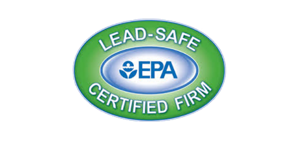Straight-line winds are powerful gusts that often top 50-60 mph. They can cause more serious damage than tornadoes in most of the U.S. They come from thunderstorm downdrafts and can leave damage paths stretching for miles.
This damage can impact homes and businesses, leading to environmental issues. People in areas prone to thunderstorms are especially at risk. If they live in mobile homes, their danger increases, as these structures can be badly hit by winds over 80 mph.
Key Takeaways
- Strong winds exceeding 50-60 mph are often more damaging than tornadoes.
- Thunderstorm downdrafts generate these hazardous straight-line winds.
- Mobile homes face significant risks when wind speeds exceed 80 mph.
- Residential and commercial properties in thunderstorm-prone areas are at higher risk.
- Environmental impacts from windstorms can include deforestation and habitat disruption.
Understanding Damaging Winds
Damaging winds, also known as straight-line winds, come from thunderstorms. They can be faster than 50-60 mph. These winds often cause more damage than tornadoes in the US.
The winds from storm downdrafts damage a lot. They can affect life and property. For example, mobile homes are in great danger from winds over 80 mph.
Damaging winds include macrobursts and microbursts. Macrobursts cover large areas with strong winds. Microbursts have very high, short-lived wind speeds, over 100 mph at times.
If the wind damage covers over 240 miles with gusts over 58 mph, it’s a derecho. This kind of event causes widespread damage. So, it’s essential to know about and get ready for these storms.
There’s also the risk of haboobs. These are walls of dust driven by storm winds. They move fast and make the risk from strong winds even worse.
Types of Damaging Winds
Damaging winds come in many forms, each causing unique effects. Straight-line wind types include microbursts, macrobursts, downbursts, derechos, gust fronts, and haboobs. They can damage large areas for various lengths of time.
Microbursts are powerful, brief downdrafts with a width under 4 km. They last for five to ten minutes but can reach over 100 mph. They do a lot of harm, especially in the western U.S. plains and intermountain areas. Dry microbursts, with little rain, are common there.
On the other hand, macrobursts affect areas larger than 4 km, spreading strong winds further. Downbursts can cause as much damage as big tornadoes when they hit the ground. Both can cause major problems for buildings and structures.
Derechos are wind storms that last a long time and cover over 240 miles. They have winds of at least 58 mph and can destroy cities and homes. Florida faces a high risk of derechos in summer because of its weather and landscape.
Gust fronts form from stormy, cold air running into warm air. They create quick, strong winds and sometimes scary-looking shelf clouds. These winds can damage properties like sheds and mobile homes. Sometimes, their activity even produces gustnados, which are weaker than tornadoes.
Haboobs are winds full of dust, moving fast across desert lands. They cause low visibility and dangerous conditions for anyone in the way.
Knowing about straight-line wind types is crucial for getting ready for storms and reducing their harm. The power of microbursts, macrobursts, downbursts, derechos, gust fronts, and haboobs shows the importance of being informed and taking steps to stay safe.
Common Damage from Strong Winds
Strong winds create structural wind damage in many ways. They can move large branches and trees. Roofing structures are also at risk, and it can be hard to walk against the wind. If wind gusts go over 75 mph, it’s hurricane force. This can uproot trees, flip mobile homes, and turn objects into dangerous debris. This debris causes injuries and can severely damage homes and buildings.
Strong winds often bring down power lines. This causes power outages and dangerous situations. It’s vital to do wind damage repair right after a storm. This work includes replacing tiles, fixing siding, and stopping leaks.
Knowing about the dangers of strong winds is really important. It helps people and communities prepare better. Proactive steps and fast repairs are key. They help reduce the damage and speed up recovery.
Impacts on Residential Areas
Strong winds can really mess up our homes, causing various kinds of damage. When winds blow faster than 50-60 mph, they’re called damaging winds. These can mess up your home’s structure big time. Things like fallen branches, trees pulled from the ground, and power lines down can make a huge mess. Roofs are especially at risk, often getting damaged at the edges and corners.
Wind at 40-45 MPH can already start damaging roofs, breaking shingles or affecting the structure. If the wind gets over 55 MPH, the situation can get a lot worse. Gales at 75 MPH or more could tear off roofs and break windows. To avoid these costly problems, it’s key to keep your roof well-maintained. Regular checks and fixes, like replacing loose shingles, can help a lot.
After the windstorm, homes might need quite a bit of repair. Wind damage repair usually means covering roofs with tarps, changing broken shingles, and checking for other damage. It’s important to fix these things fast, as waiting too long can cause more problems. Things like leaks inside if it rains again. Regular checks on your home’s structure, particularly in areas where the wind risk is high, are very smart. They let you solve problems early and handle wind damage better.
Damage to Commercial Properties
Commercial wind damage often causes serious problems to buildings. It can break windows, hurt the front of the building, and sometimes make parts of the building fall down. Strong winds, especially during storms or hurricanes, can blow away signs. They can also tip over trees, causing even more damage.
It’s crucial for businesses to prepare for wind damage. They should do things like:
- Anchoring outdoor items to prevent them from becoming hazardous projectiles.
- Installing storm shutters to protect windows from shattering in strong winds.
- Regular tree and landscape maintenance prevents trees and branches from falling.
- Roofs and drainage systems need to be checked often to prevent damage.
Strong winds can also lead to water damage. This often happens after storms, causing leaks or flooding. The look and function of a commercial building can change a lot after a serious storm. Sometimes, buildings can even collapse. It’s very important to secure anything outside, like furniture, to stop it from flying around.
Businesses should use surge protectors and backup power to stay up and running during a storm. It’s wise to spend on strong roofs and windows. And, regular checks and looking over insurance policies are also really important to protect a building from wind damage.
- Reviewing insurance policies to ensure comprehensive coverage against wind damage incidents is key.
- Scheduling frequent inspections of roofs and drainage systems helps spot and fix problems early.
Preparing well for wind damage is critical for businesses. This can help avoid big disruptions to their operations. It also makes sure the buildings stay safe even in very bad weather.
Environmental Damage
Severe windstorms have a big impact on our environment. In the US, straight-line winds are behind half of the severe damage reports. They can be faster than 100 mph. This power can uproot trees and mess up habitats. It can ruin nature, harm wildlife homes, and throw off the ecosystem.
Windstorms worsen soil erosion, taking away the good soil and stopping plants from growing. They also spread seeds and plants, which could bring in unwanted species. Fixing the environment in these areas becomes very important.
The impact isn’t just on land. Strong winds at sea cause big waves that can hurt the coast and its plants and animals. Understanding the full damage helps with fixing these natural spots.
Fixing these areas needs a smart plan. Planting trees again, keeping the soil from washing away, and fixing homes for animals are key. These steps help bring back the balance and keep the environment healthy for the future.
Conclusion
The danger from strong winds is real and serious for our property, lives, and the world around us. From straight-line winds to gale force winds, the risks are many. About half of the biggest damage reports in the lower 48 states come from winds alone.
When the wind hits 100 mph or more, it can destroy things in its path. Even anchored mobile homes face high risks from strong winds. And don’t forget, gale force winds at sea mean rough waters, high waves, and hard-to-see conditions.
It’s important to check wind damage carefully. This tells us how much help is needed. Houses with siding can get water damage from wind. Organizations send out gale warnings to help people get ready for storms. These usually happen in summer or with thunderstorms.
To make our homes safer from wind, there are steps we can take. Tying down outdoor things, strengthening weak spots in our homes, and keeping our yards clear can help. After a big wind, fixing and cleaning up is key to getting back to normal.
Being ready and informed makes a big difference when the wind blows hard. It helps communities bounce back faster. Together, we can be stronger against the power of windstorms.






